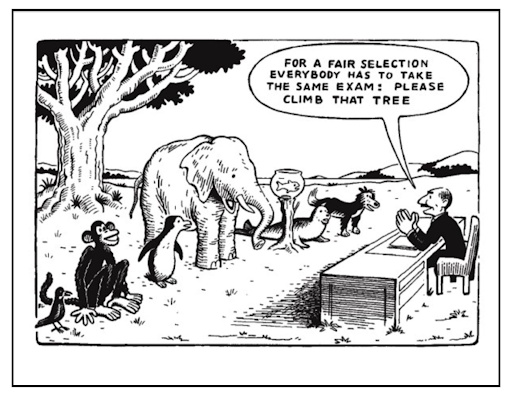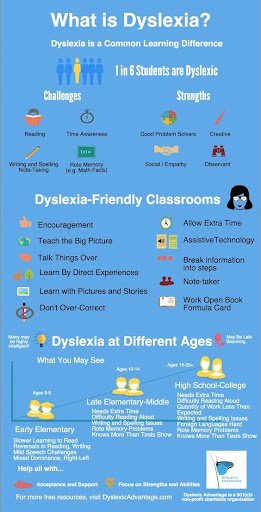Did you know that October is Dyslexia Awareness Month? Five percent of all students in public schools in the United States have specific learning disabilities (SLD). Every teacher can expect to find students with learning disabilities in the classroom. 1
Dyslexia is considered a Specific Learning Disability. Disabilities under that umbrella include dyslexia, dysgraphia, auditory processing, visual processing, dyscalculia, spelling. Dyslexia is a language-based learning disability that primarily affects the skills involved in reading. Other language skills, such as speaking, writing, spelling, and sometimes even listening can be affected. Dyslexia is different for every person who has it. Some people have difficulty learning to read, while others have difficulty with other language skills. Dyslexia is not an intellectual disability, but rather a difficulty with language. This makes it unique from other learning disabilities that primarily affect cognition (thinking).
What is Dyslexia?
Learning disabilities, by definition, are disorders and basic psychological processes that involve understanding and using language. It is the ability to receive, process recall, and then communicate information. Dyslexia isn’t just reading words. It is also the ability to read with accuracy, speed, and understanding.
Symptoms of Dyslexia
Preschool
- Mispronouncing words
- Trouble naming familiar objects
- Trouble learning nursery rhymes
- Trouble remembering the alphabet song when practiced daily
- Telling stories that are hard to follow
Kindergarten-2nd grade
- Trouble learning letter names and sounds the letters make
- Confusing letters that look similar
- Struggling to read familiar words (especially if they don’t include pictures)
- Substituting words in the text for words they have seen before
- Unable to separate individual sounds in words when asked to isolate sounds, trouble blending sounds to make a word
Grades 3-5
- Confusing and skipping small words in text like the, of and for
- Trouble sounding out new words
- Trouble quickly recognizing sight words
- Struggling to explain what happened in a story. 2

The Truth About Dyslexics
- Read at a slower rate than their peers and therefore come into contact with fewer words.
- It’s essential to strengthen oral vocabulary
- As the student learns to decode, he can associate the word with its meaning(s)
- Results in improved reading accuracy and comprehension
Are There Symptoms of Dyslexia? Is it a Disability or a Gift?
Dyslexia is a language-based learning disability. It is a learning disability that makes reading difficult. It is common in people who have a family history of dyslexia. People with dyslexia have trouble identifying the different sounds in words, so they have trouble blending sounds into words or recognizing words. Dyslexia refers to a cluster of symptoms, which result in people having difficulties with specific language skills, particularly reading. Students with dyslexia usually experience difficulties with other language skills such as spelling, writing, and pronouncing words. Reading comprehension is sometimes impaired due to very poor word reading skills. Individuals with dyslexia may also have impaired orthographic processing, which interferes with connecting letters and letter combinations with sounds accurately and fluently.
Dyslexia affects individuals throughout their lives; however, its impact can change at different stages in a person’s life. It is referred to as a learning disability because dyslexia can make it very difficult for a student to succeed academically in the typical instructional environment. It will qualify a student for special education, special accommodations, or extra support services in its more severe forms.
On the other hand many dyslexics have said dyslexia is a true gift. Dyslexics are able to see, feel and sense what they are imagining as though it were real. They also can shift their point in order to create mental images. They can also are gifted at observing their environment. While Dyslexia is a language-based disability, it is also a gift.

A Treasured System That Helps Students with Dyslexia
Samuel Torrey Orton (1879-1948) and Anna Gillingham Anna Gillingham (1878-1963) worked together to found the Orton-Gillingham Approach. Samuel was a neuropsychiatrist and pathologist and his focus was on reading and language processing difficulties. He studied children with the kind of language processing difficulties now commonly associated with Dyslexia and had formulated a set of teaching principles and practices for these students. Anna was a gifted educator and psychologist with a mastery of the English language. Working with Dr. Orton, Anna trained teachers and compiled and published instructional materials. Over the last half-century, the Orton-Gillingham Approach has been one of the most effective interventions for remediating students with language processing problems and Dyslexia.
What is the Orton Gillingham Approach?
This research-based approach has been used for many decades to provide literacy remediation to students of all ages successfully. People with dyslexia have difficulty primarily in the areas of reading, writing, and spelling. Often these difficulties create a learning gap in other academic areas.
It has been found that those who do not have Dyslexia acquire language skills easily need to be taught the various components that make up the English language. This approach that Dr. Samuel Orton and Anna Gillingham created has been proven effective time and time again in assisting individuals to overcome their language-based disabilities.
In fact, the Orton Gillingham Approach is now widely used in general education classrooms. Due to the prescriptive nature of the Orton Gillingham Approach, the lesson plans target the student’s individual learning needs in the early years. It also caters to different learning styles by incorporating multisensory strategies.
How does this approach work?
Many programs have evolved throughout the years from the research and use of components within the Orton Gillingham Approach.
The most necessary components to be effective for students with Dyslexia or specific language-based disability are discussed below.
Essential Elements:
- A Multisensory Approach: The use of various modalities: visual, auditory, kinesthetic (movement), and tactile (touch) pathways.
- Synthetic-Analytic: Synthetic Phonics is the learning of phonemes (the smallest unit of sound) and their corresponding graphemes (the written symbol for each phoneme). Analytic Phonics (whole-word approach) breaks down a whole word into its parts with the help of decoding.
- Structured System: The system is presented in an organized manner indicating the relationship between new and previously taught information.
- Sequential: The approach moves from the simple concepts of our language to the more complex concepts until all steps are mastered.
- Repetitive: The approach includes word recognition, reading fluency, and reading comprehension in a repetitive manner so that students recognize the patterns.
- Cumulative: As each language skill is mastered, new skills are introduced. Each step is an essential building block for the next sequential step.
- Cognitive: The student learns and understands the rules of language and how to apply those learned skills to become a fluid and proficient reader, spell words correctly, and creatively write.
- Diagnostic: The teacher is required to monitor the student’s progress continuously.
- Prescriptive: The instructor then takes the diagnostic information and drives the subsequent lesson planning to best target and promote a resolution to the student’s areas of need.
In this approach, teachers spend time teaching syllables, onset, and rime, phoneme, blend, digraph, trigraph, etc. Sometimes students with working memory issues have problems remembering such terms. Therefore it continues to be taught for several years so that the student masters the language rules for application in their Reading and Writing.
Other Techniques Used for Dyslexic Learners
- Reading Sentences Backwards. This technique is also called Reversed Sentence Reading. The teacher asks the student to read a sentence from the last word to the first word. The purpose is to help the student avoid the temptation of guessing words. Many people with dyslexia learn to guess words by using the context of the other words in the sentence to figure words out. This is an excellent technique for compensating readers.
- Reading Nonsense Words. Teaching students nonsense words is helpful because the student has to know the individual letter-sound relationships and the simple letter patterns in the English language. When using nonsense words, teachers and students easily notice if there is a particular letter-sound relationship challenge.
- Learning Irregular Words. An irregular word is a word that cannot be easily decoded, because the sounds of the letters are unique to that word, or only found in a few words. When teaching these types of words, it is important to point out the regular parts of a word to the student.
Sight words and orthographic sequences of letters are hooked or anchored to pronunciations of words that are already stored in our long-term memory because we learn to speak long before we learned to read.
In David Kilpatrick’s book Essentials of Assessing, Preventing and Overcoming Reading Difficulties, he states, “Students are more likely to read words they have learned to spell than to spell words they have learned to read.” This explains why this system works for Dyslexics.
Accommodations for the Classroom
- Allow mastery of content to be demonstrated via various options, such as oral, class presentation, pictorial display, video
- Create multiple-choice tests & allow the student to simply circle his answer choice.
- Allow extra time to complete assessments.
- Provide prompts for the student during writing tasks.
- Allow the use of text to speech software during tasks or assessments that involve a lot of reading.
- Text-to-Speech Technology – Learning Ally is a valuable resource for this accommodation.
- Provide pre-exposures of reading materials – Allow the student with Dyslexia to take reading materials home before the reading block occurs at school, along with any vocabulary words that will be covered in the text. This allows the student to practice the passage with a parent and learn key vocabulary words ahead of time to set him up for success at school.
- Provide the student notice in advance of larger reading assignments – This allows her ample time to successfully complete this assignment
- Allow use of a laptop computer or an iPad (or any tablet)
- Provide a classmate with carbonless notebook paper – A classmate can provide the student with Dyslexia lecture notes by using carbonless notebook paper.
- Allow students to record lectures.
- Provide students with wide-ruled paper if necessary
- Additional time to complete the assessment
- Use of colored overlays – The glare that often results from white school paper causes visual strain for some students. Using light-colored overlays for classroom assignments and assessments may be helpful to reduce processing strain.
- Use of highlighters to color code assignments and assessments – Using highlighters to organize tasks and tests may be helpful for some students to categorize content and minimize visual distractions.
Dyslexia doesn’t just affect students in school. It also makes life difficult socially and emotionally. You may notice these students struggle learning the rules to social games, keeping track of multi-step directions and learning new languages. The sooner children are diagnosed and have the strategies they need, the greater chances of success in life.
Be sure to join us to learn more about Dyslexia and other Learning Disabilities here on our blog and at our upcoming conference.
https://ldaamerica.org
https://www.understood.org
www.DyslexicAdvantage.com
Teach Your Heart Out!
Find more Blog TeachSpiration on TheWrightStuff Blog
Please leave your comments below!
Twitter
Instagram
Author, Blog Content Creator, Educator, Presenter of Student Engagement and Executive Functioning Matters, Book Junkie, Self Help/Care Enthusiast, Mother & Calligraphist


